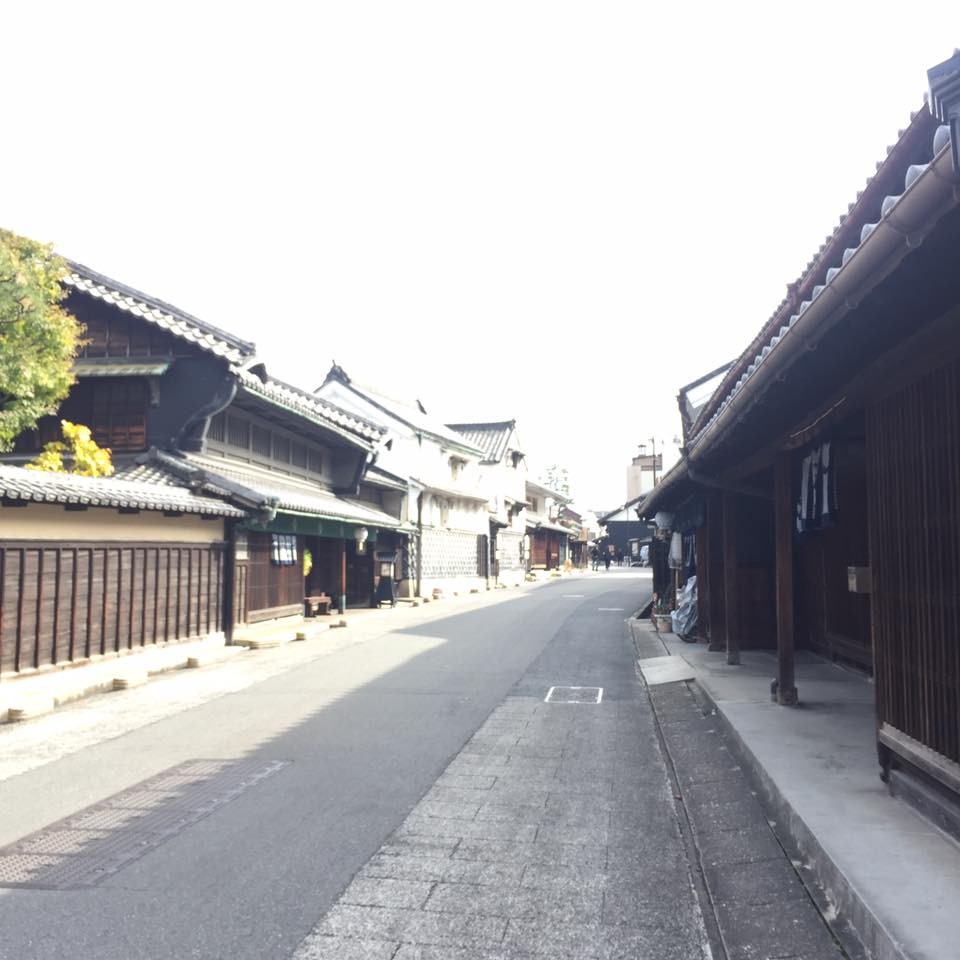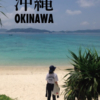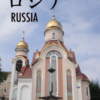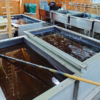Vol.13 Arimatsu Shibori, Nagoya | 名古屋 有松絞り
2018年10月。名古屋から名鉄で30分、東海道五十三次の街道随一の美観、有松。
江戸時代は、お伊勢参りの旅人が故郷の土産にと絞りの浴衣や手ぬぐいを買い求め、街道一の名産品として繁盛したそうです。
October 2018. Arimatsu, 30 minutes from Nagoya by Meitetsu Railway, is the most beautiful place on the fifty-three stations on the Tōkaidō (Edo-Kyoto highway in Edo-period Japan). In the Edo period, travelers visiting Ise would buy shibori yukata* and tenugui* as souvenirs for their hometowns, and the area thrived as the most famous product along the highway.
Shibori : tie‐dyed fabric
Yukata : an informal cotton kimono for summer wear
Tenugui : hand towels
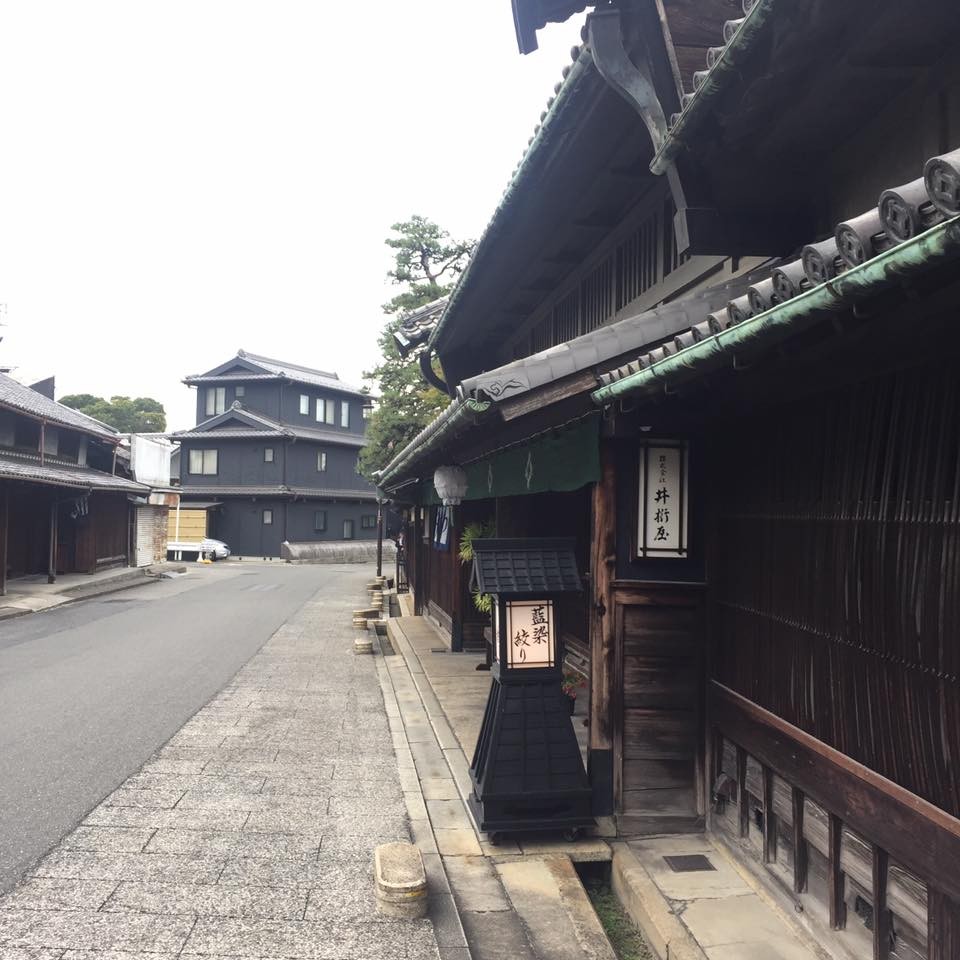
有松絞りは400年前、糸でくくった木綿を藍などの草木で染めたことにはじまり、絞りの手法は100種類以上。今もすべて職人の手仕事で、絞り職人が一粒一粒を丹念に括っています。
Arimatsu shibori began 400 years ago, when cotton cloth was tied with thread and dyed with plants and trees such as indigo, and there are more than 100 different shibori techniques. Even today, all shibori is still handmade by craftsmen, who carefully wrap each piece individually.
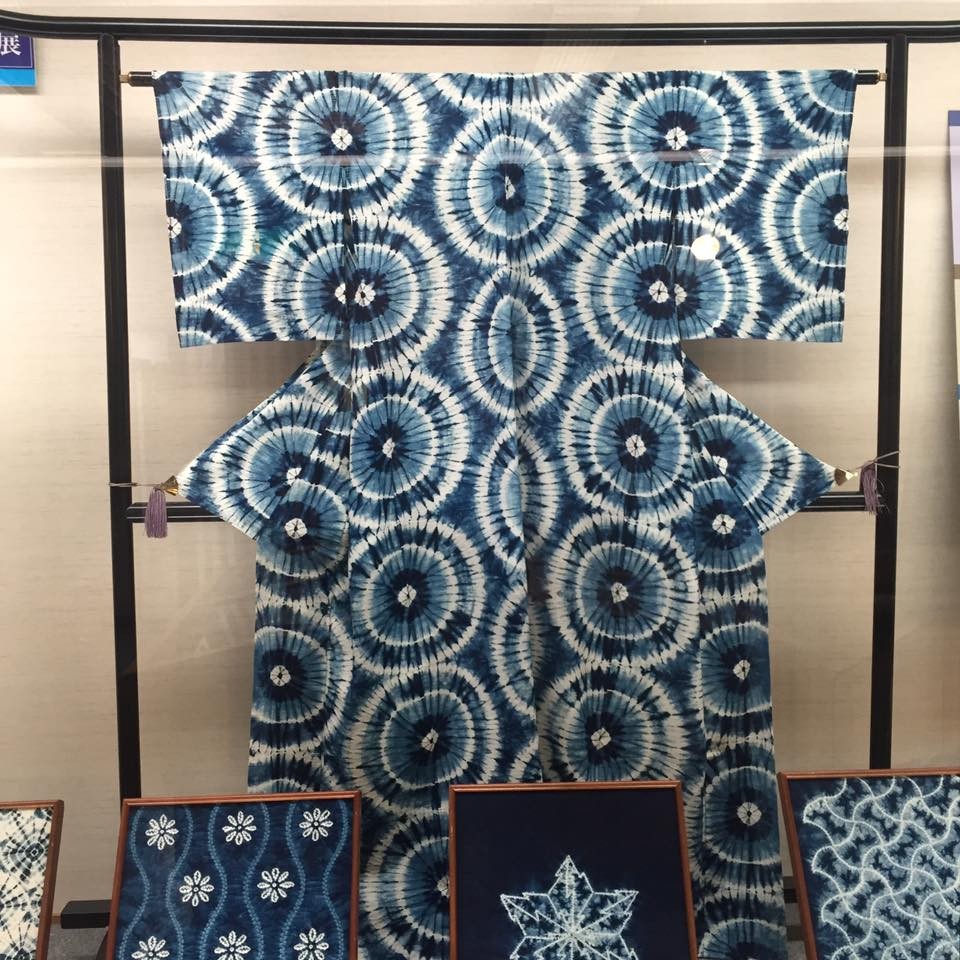
現在は、重要無形文化財記録保存指定や伝統的工芸品産業指定となっており、有松絞りの伝統が今も受け継がれています。昭和になってからは絞りの浴衣が人気で、国内の絞りの90%は有松で生産。生産数が多いので絞りの工程だけ海外にお願いすることもあるとのことでした。
Today, the tradition of Arimatsu shibori is still being carried on, as it is designated as an important intangible cultural asset record preservation and a traditional craft industry designation. Since the Showa period (1926-1989), shibori yukata have become popular, and 90% of all shibori in Japan is produced in Arimatsu. Because of the large number of shibori produced, the company sometimes requests that only the shibori process be done overseas.
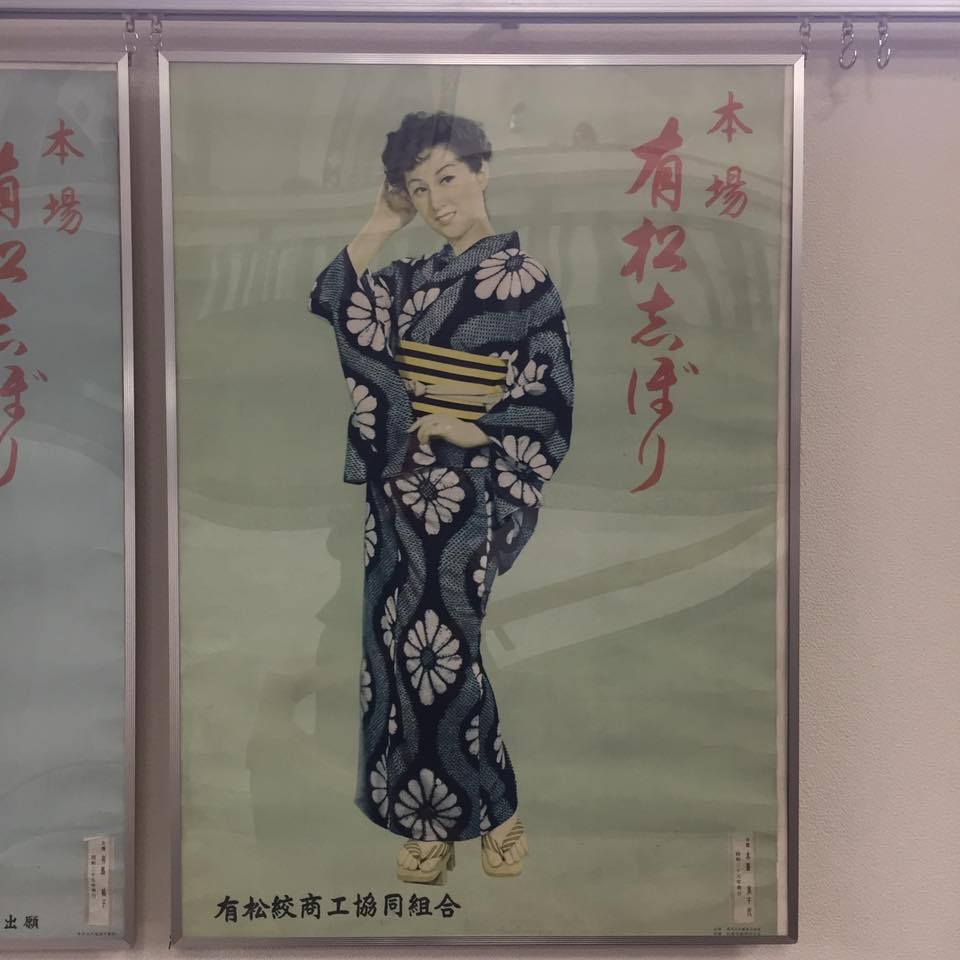
昭和な浴衣。祖母が縫ってくれた私の浴衣も藍染の絞りです。My yukata, sewn by my grandmother, is also indigo-dyed shibori.
今回は有松・鳴海絞り会館での絞り体験。
江戸時代の藍色の美しい浴衣、括り道具の工芸品などを見てから括りの実演見学。絞りには名前がついていて、鹿の子、三浦、雲、竜巻、、などなど、100種類! 分業になっており、ひとりの職人がひと種類の絞りをくくり続けるそう。
This time, we will experience shibori at the Narumi Shibori Kaikan in Arimatsu.
After viewing beautiful indigo-colored yukata from the Edo period and the craftwork of shibori shibori tools, visitors will observe a shibori shibori demonstration. There are 100 types of shibori with names such as Kanoko, Miura, Kumo, Tatsumaki, and so on! The work is divided into several departments, and one craftsman continues to tie one type of shibori.

絞りの文様にはそれぞれ名前がついてます。Each shibori pattern has its own name.
竜巻絞りのおばさまのくくり実演で、お話を聞きながら手さばきに見入る。おばさま作の竜巻絞りスカーフを購入、3000円となんか安い。
At a demonstration by a woman of tornado-shibori tie-dyeing, we listened to her story and watched her handiwork. I bought a scarf made by the woman for 3,000 yen, which was very inexpensive.
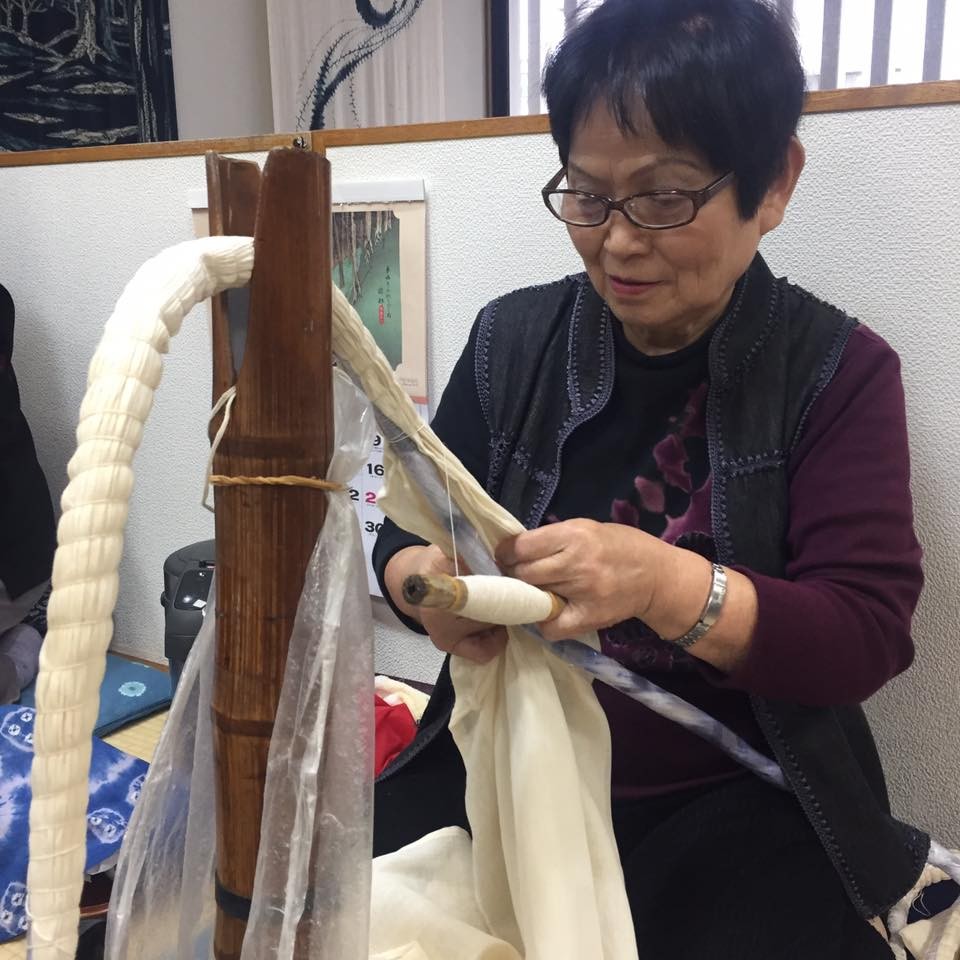
絞り体験はハンカチで。図案が書かれたところを、糸でチクチク。そこをグッとひっぱり、出っ張ったところを糸でグルグルとまく。この糸の部分が染めの時白く抜ける感じになるのかな。シンプルな亀の文様だけど1時間かかった。3週間後に染めたものが届く予定!
The tie-dyeing experience is done with a handkerchief. The design is drawn on the handkerchief, and the thread is pricked on. Pull it tight and wrap the protruding part with the thread. This part of the thread will look white when it is dyed. It is a simple turtle pattern, but it took me an hour!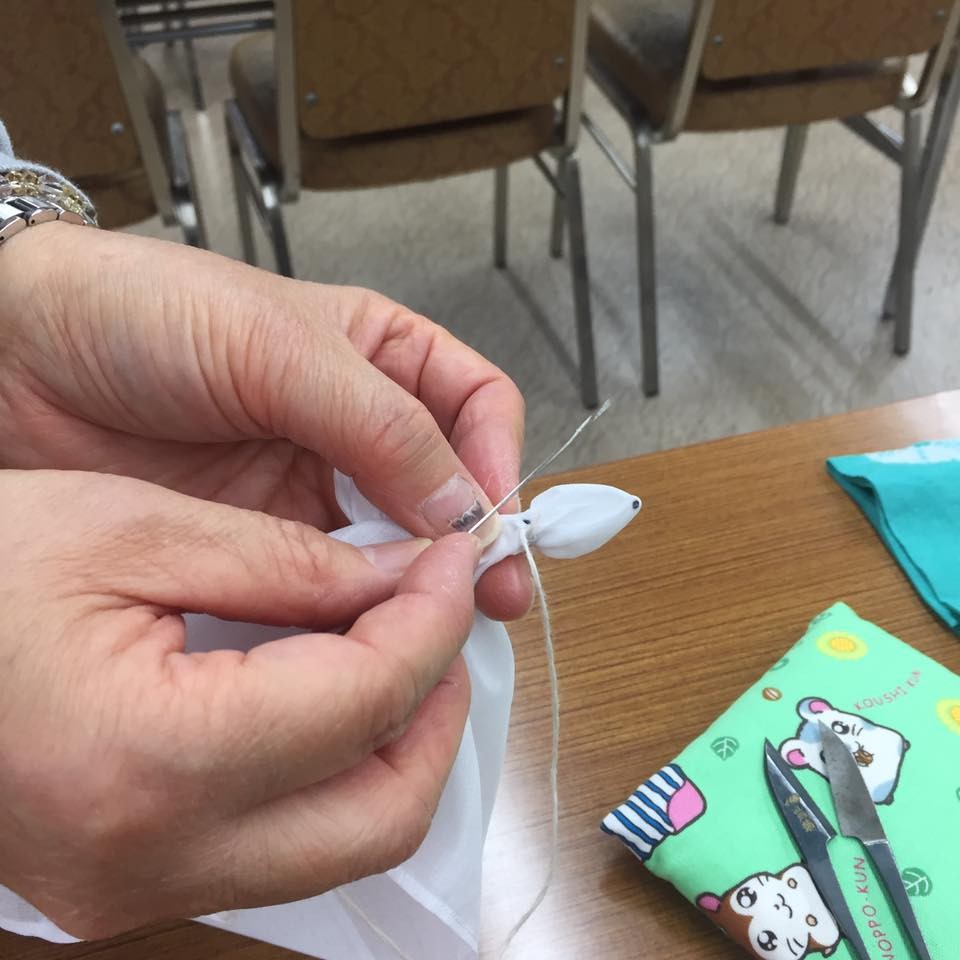

有松の街道沿いの商店ではスカーフや小物、浴衣や、絞りの洋服も。会館では浴衣用の反物も置いてあり、デパートより品ぞろがよいそうです。
Scarves, accessories, yukata, and shibori clothing are also available at stores along the Arimatsu street. The museum also carries fabrics for yukata, and the selection is said to be better than that of department stores.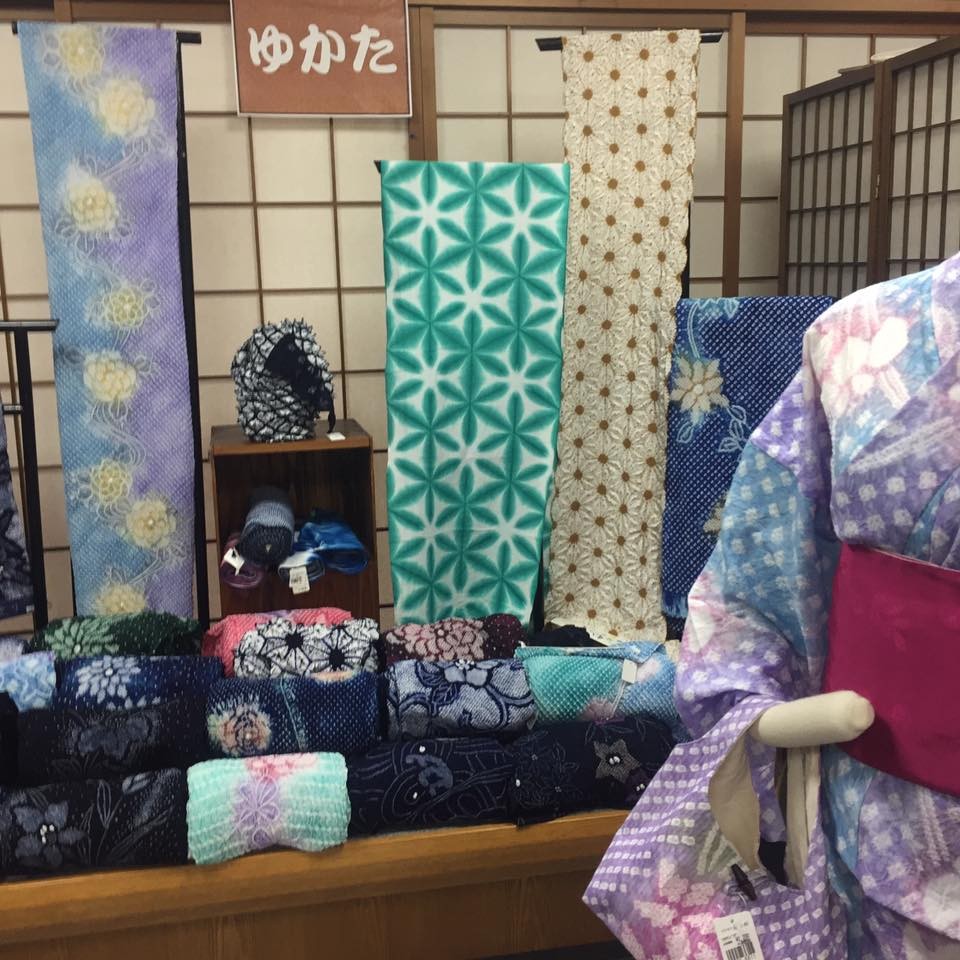
文化財に指定されている街並みはまさに江戸時代。有松絞りの店舗のほかにカフェや飲食が数件ありましたが、あとは個人住宅なので外から眺めるのみ。中は改築されてるとは思いますが、生活をしてるのか想像が膨らみます。
The streets, designated as cultural assets, are truly Edo period. In addition to the Arimatsu-shibori stores, there were a few cafes and restaurants, but the rest were private residences, so we could only view them from the outside. I think the inside has been remodeled, but it is hard to imagine how they are living.
